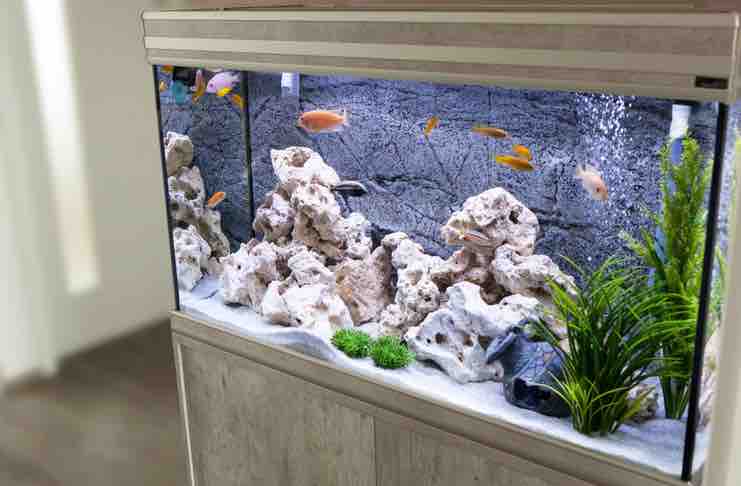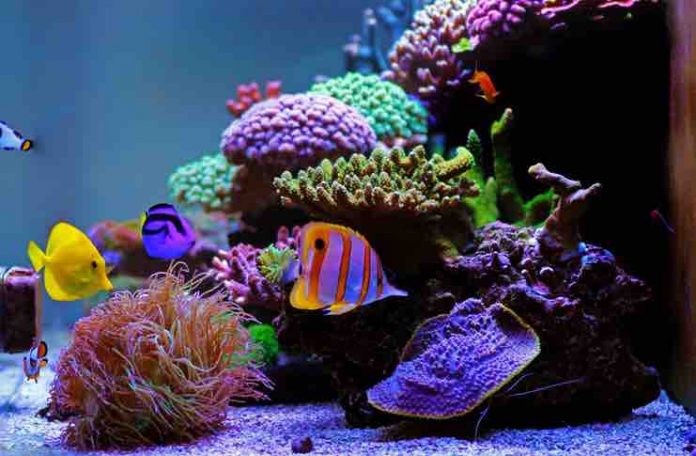Setting up an aquarium is exciting because fish are a great addition to the household. There is, however, much research that is required to set up a healthy environment for your fish. You need to find out the best possible information and styles of aquariums to avoid waking up to unhealthy or dead fish. In this post, we’ll discuss a few important things you should know when setting up a new aquarium.
10 Tips on Setting up a New Aquarium:
1. Research Type of Fish
Before you start your journey to setting up an aquarium, you need to research the type of fish you would like to add into your aquarium. The type of fish determines the care needed, feeding schemes, and whether your tank is the right size for the type of fish.
Some fish grow rapidly and you may find that, as they grow, your fish tank won’t be able to accommodate their size which compromises their health. A fish tank that is too small for fish can stunt growth or cause physical deformities, which is why research is crucial regarding aquarium type and size.
2. Assess Tank Quality
If you already have a fish tank that you wish to prepare, you need to access whether it is of quality. You must clean it thoroughly using clean cloth and water.
Avoid using detergents as the chemicals can contaminate the freshwater that you will add at a later stage. Once you have cleaned the tank, you can fill it up with water to test for any leakages or potential cracks.
If you are still thinking to purchase a tank, you should base your decision on the type of fish that you want to add in the tank.
3. Add Substrate
Once you have tested the quality of your tank or purchased a new one, you can continue to add aquarium substrate. Aquarium substrate is the material that you place at the bottom of the tank.
The purpose of the substrate is to decorate your tank, facilitate a natural environment for your fish so that they feel as if they are in familiar territory, and to anchor any plants that you may include in your aquarium. The type of substrate you can add include pebbles, gravel, and sand.
4. Position Your Tank
You need to find a spot in the house that facilitates for the fish to thrive. You must place your tank in a place that doesn’t have much traffic in the house, and close to an electric socket as it will have to be plugged in. The tank also shouldn’t be positioned in a place that receives direct sun as this can overheat the water and compromise the health of the fish.
5. Add Fresh Water
Fresh water is recommended for a quality habitat for fish. Chemicals in water can compromise the habitat and may kill fish. Avoid using water purifying additives such as pills. Your fish will thrive best in freshwater.
Also, a note: depending on the kind of fish you have, they may need a saltwater or a freshwater habitat. Regardless of the salinity, you should be using fresh water untainted by chemicals to fill the tank.
 6. Place Gadgets
6. Place Gadgets
If you are going to use any gadgets such as the aquarium heater, thermometer, and water lights to facilitate for night and day schedules, you can get these gadgets ready for use. An aquarium heater is ideal especially if you live in cold temperatures.
A temperature of 76–80º F is ideal for fish and temperatures below that may lead to death. Your thermometer can indicate the temperatures, meaning you can then adjust your heater or add cooler water to bring down the temperate accordingly.
7. Cycle Your Water
The day that you set up your aquarium shouldn’t be the same day that you add in fish. You need to run your tank for at least a day or two, which is known as water cycling. Cycling water allows the bacteria in the substrate to filter and break down the waste from the fish. Without this bacterium, fish will continue to breathe and feed on its waste, which can kill these off.
8. Add Fish
Once you have cycled the water, you are then ready to add your fish. You should avoid adding several fish at a time as they may become overwhelmed and shocked by the new environment.
Adding one or two fish at a time over a period will encourage the fish to acclimatize. You may notice that during the first few days, the fish may hide. This is normal as they are trying to adjust to the new environment.
You can place plants as a part of your substrates as they may use these as shelters to hide behind. After some time, the fish will become visibly active.
9. Regularly Clean Water
Tending to your aquarium goes beyond preparing it for the fish. Once your fish are in the tank, you need to regularly clean the water to maintain a healthy environment.
Keep in mind that the fish food and waste share the same space, so cleaning the water is important. When you decide to clean the water, you need to place the fish in a bowl or fish bag. You then drain out the water and remove the substrate from the tank.
You will have to clean the tank as well as the substrate and remove any visible particles that aren’t supposed to be a part of it. Once you have cleaned the tank, you can place the substrate back in, add fresh water, and the fish back into the tank.
10. Regularly Monitor
The behavior of your fish will communicate whether the habitat is functioning well or not. If you notice that your fish continue to hide away, or aren’t active, or are dying at certain intervals, you need to assess the state of your aquarium.
It could be that the water has been compromised, it’s too cold or hot, or the positioning of the tank is not the best. You must place the fish back in a bowl or fish bag and figure out whether you can identify the problem.
Conclusion
Setting up a fish tank requires careful attention to details and preparation for when you will eventually add the fish. You can begin by researching the type of fish you wish to add as this may determine the size of your tank, assess the quality of your tank, add substrate, position your tank, place aquarium gadgets, add fresh water, cycle the water, add fish and then regularly clean the tank as well as monitor the fish.



